Page 17 of 28
Re: The unofficial/official Korean Teaware Topic
Posted: Mar 28th, '12, 12:34
by TIM
Wow! That's a beautiful melon. Thx Tead

Re: The unofficial/official Korean Teaware Topic
Posted: Mar 28th, '12, 12:40
by Tead Off
Here's another teapot by Kim Kyeong Soo
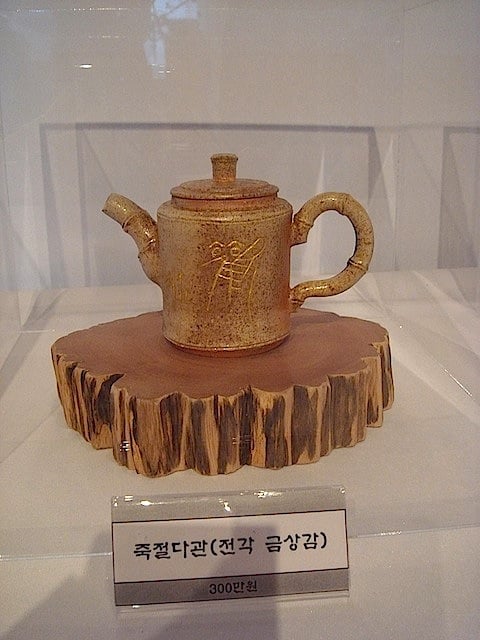
- Kim Kyeong Soo 2.jpg (49.3 KiB) Viewed 1632 times
Re: The unofficial/official Korean Teaware Topic
Posted: Mar 29th, '12, 04:56
by Tead Off
2 gorgeously glazed and formed teapots in Hadong Museum.
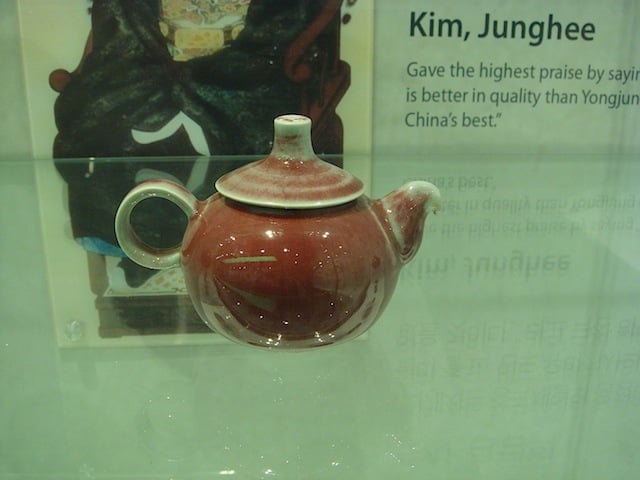
- DSC00166.jpg (32.93 KiB) Viewed 1578 times
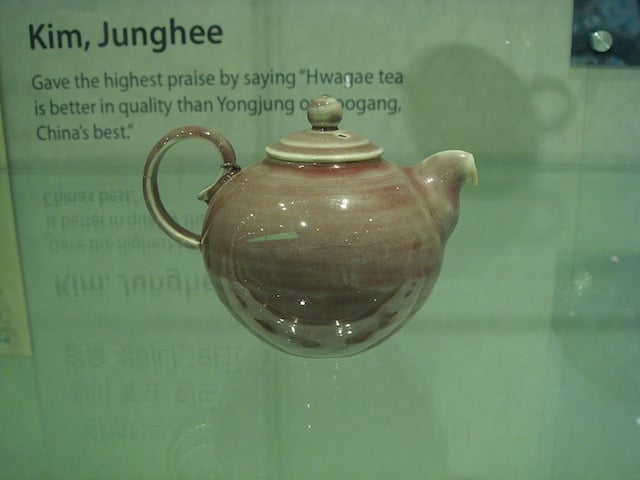
- DSC00167.jpg (26.3 KiB) Viewed 1578 times
Re: The unofficial/official Korean Teaware Topic
Posted: Apr 2nd, '12, 11:23
by JeffBrown
The universe always provides what you need as long as you are looking for it.
I have found this forum very helpful, and this discussion is just what I need this month. I will be in Korea for the 9 day teabowl festival, learning more about Korean tea, teaware, & potters than I ever expected.
I hope that I get a chance to meet Hong Seong-il, at the international potters event(I like what ya'll have shown of his work.) ...there will be 50 or more potters participating, half of them from Korea.
I'll bring back photos to share.
Re: The unofficial/official Korean Teaware Topic
Posted: Apr 2nd, '12, 11:34
by Tead Off
Unfortunately, I won't make it to Mungyeong this time. I will miss it a lot.
Here's another master teapot from the museum in Hwagae.
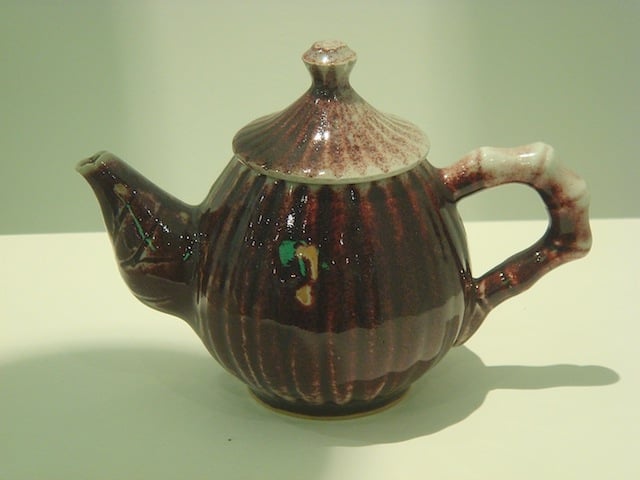
- Hadong Tea Museum.jpg (27.22 KiB) Viewed 1495 times
Re: The unofficial/official Korean Teaware Topic
Posted: Apr 2nd, '12, 11:37
by Tead Off
Teapot from the last Mungyeong Teabowl Festival.
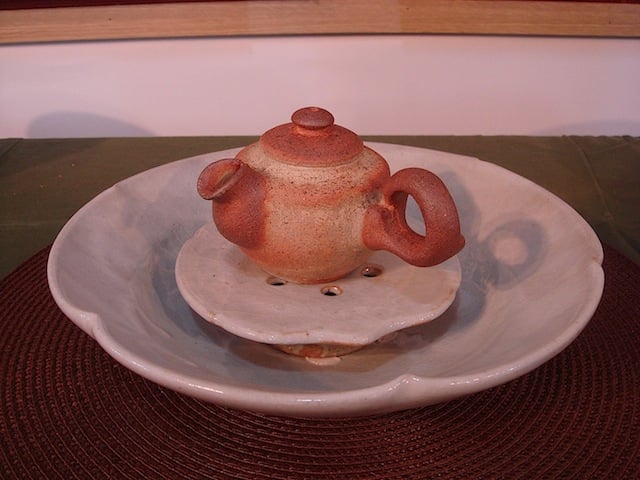
- Mungyeong teapot.jpg (42.31 KiB) Viewed 1495 times
Re: The unofficial/official Korean Teaware Topic
Posted: Apr 7th, '12, 05:01
by Tead Off
Mungyeong potter Oh Sun Tack preparing tea at tea bowl festival 2011.
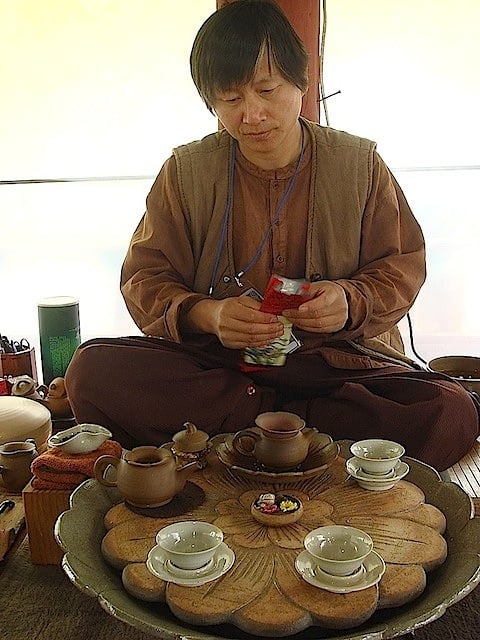
- Oh Sun Tack.jpg (64.95 KiB) Viewed 1451 times
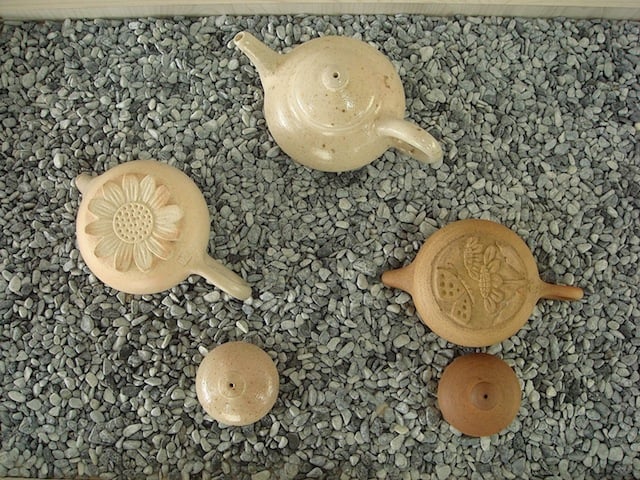
- Teapots by Oh Sun Tack
- DSC00049.jpg (97.39 KiB) Viewed 1451 times
Re: The unofficial/official Korean Teaware Topic
Posted: Apr 10th, '12, 17:12
by Robert Fornell
Nice photos Jeff of a very kind man and wonderful potter. He was one of 9 Korean potters featured out of a total of 35 in the "Teaware From the Edge" exhibition which I curated in conjunction with NCECA this spring.
Unfortunately, while invited, I can't make it to Mungyeon this spring, but will be going to Korea in the fall as well as on to Japan. Would like to see you again!
Re: The unofficial/official Korean Teaware Topic
Posted: May 4th, '12, 12:03
by TIM
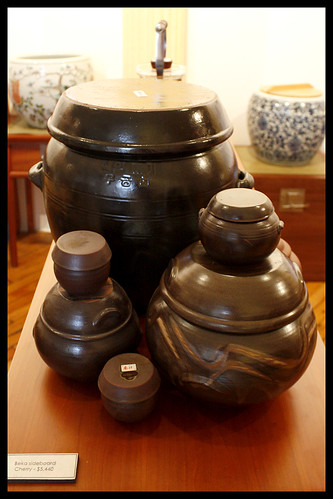
The marriage of Korean (onggi) and Chinese (puerh).
Re: The unofficial/official Korean Teaware Topic
Posted: May 4th, '12, 13:03
by Tead Off
Good choice! Onggi is an overlooked clay.
Re: The unofficial/official Korean Teaware Topic
Posted: May 4th, '12, 21:52
by TIM
Tead Off wrote:Good choice! Onggi is an overlooked clay.
Great that we share some similar interest. Onggi means vessel, jar or lidded jar. So different area have different clay and glaze. Just so you know.
Re: The unofficial/official Korean Teaware Topic
Posted: May 5th, '12, 06:49
by Tead Off
TIM wrote:Tead Off wrote:Good choice! Onggi is an overlooked clay.
Great that we share some similar interest. Onggi means vessel, jar or lidded jar. So different area have different clay and glaze. Just so you know.
The word onggi is used in various contexts. I have never seen onggi defined as vessel, jar, or, lidded jar, but within a certain context, it can refer to these things. When I ask Seong il what does onggi mean, he says earthenware. It can also mean the tradition of making earthenware storage jars. These jars, made by onggi potters, use a different technique in building these jars than most other traditions.
The clay used for onggi production is iron-rich clay with a mixture of mud and sand. There are different sources for this type of clay throughout Korea. Not all onggi clays are the same but they share some common characteristics. They are particularly good for aging(fermenting) food because of their mineral structure and firing. The glazing is used to make them waterproof, otherwise, they are too porous.
In Seong il's case, his onggi teaware uses a mixture of stoneware so it can be fired at a higher temperature and glazed with shino. This takes care of the leaking that would occur and gives more possibilities for artistic interpretation and interesting glazing effects.
Hope this helps clarify a bit for those unfamiliar with this tradition/clay/usage. I'm sure I'm leaving lots of details out but just trying for a general explanation.
Re: The unofficial/official Korean Teaware Topic
Posted: May 5th, '12, 07:28
by TIM
Tead Off wrote:TIM wrote:Tead Off wrote:Good choice! Onggi is an overlooked clay.
Great that we share some similar interest. Onggi means vessel, jar or lidded jar. So different area have different clay and glaze. Just so you know.
The word onggi is used in various contexts. I have never seen onggi defined as vessel, jar, or, lidded jar, but within a certain context, it can refer to these things. When I ask Seong il what does onggi mean, he says earthenware. It can also mean the tradition of making earthenware storage jars. These jars, made by onggi potters, use a different technique in building these jars than most other traditions.
The clay used for onggi production is iron-rich clay with a mixture of mud and sand. There are different sources for this type of clay throughout Korea. Not all onggi clays are the same but they share some common characteristics. They are particularly good for aging(fermenting) food because of their mineral structure and firing. The glazing is used to make them waterproof, otherwise, they are too porous.
In Seong il's case, his onggi teaware uses a mixture of stoneware so it can be fired at a higher temperature and glazed with shino. This takes care of the leaking that would occur and gives more possibilities for artistic interpretation and interesting glazing effects.
Hope this helps clarify a bit for those unfamiliar with this tradition/clay/usage. I'm sure I'm leaving lots of details out but just trying for a general explanation.
You lost me there again Tead... when you said onggi is a clay.
You are interpreting the meaning of onggi, not translating the word onggi. Onggi in Korean means vessel or Jar. That's when most problems occur when a foreigner try to personally injects an idea to Asian Art, eg: Yixing Zisha.
Here are some of my research towards this subject. The core of Korean art is humbling, functional and simplicity. Shino is a mere shadow of a off spring of Korean pottery imho.
http://themandarinstea.blogspot.com/2009/05/onggi.html
http://www.adamfieldpottery.com/Gallery.htm#Onggi.html
http://youtu.be/twgJ6ZGYrT8
Re: The unofficial/official Korean Teaware Topic
Posted: May 5th, '12, 08:44
by brandon
Wow love those tiny Onggi tea caddy!


My back porch, a slice of Korea thanks to nice young wood worker in Seoul.
Please excuse my mess.
Re: The unofficial/official Korean Teaware Topic
Posted: May 5th, '12, 10:09
by TIM
brandon wrote:Wow love those tiny Onggi tea caddy!


My back porch, a slice of Korea thanks to nice young wood worker in Seoul.
Please excuse my mess.
You are getting that shine inside the hagi. Nice




